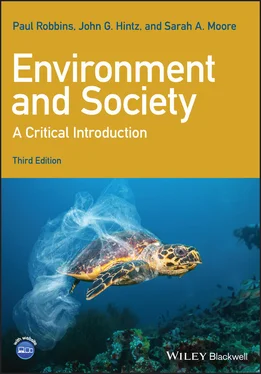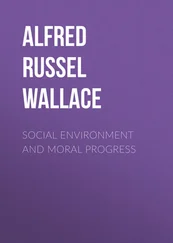
Figure 2.2 World population since 1750. Rapid increases in recent decades reflect exponential growth. Source : Source: Modified from Demeny, P. (1990). Population. In B.L. Turner, W.C. Clark, R. Kates, et al. (eds.) The Earth as Transformed by Human Action . Cambridge: Cambridge University Press.
So even while there are numerous profound limits and problems in this formulation (and more as we will see below), the arguments of Malthus and his present-day followers certainly raise questions about the relationship between society and environment and the nature of resource scarcity, its possible inevitability, and our capacity to overcome it.
Population, Development, and Environment Impact
The questions raised by Malthus have been taken up by other scholars interested in relationships between population, economic development, and environmental impacts. One approach, pioneered by Paul Ehrlich and John Holdren (1974), seeks to measure the impact of human beings on the environment, taking seriously not only raw numbers of people but also their overall rate and type of consumption. They proposed that every additional person added an impact on the Earth, though the exact rate of that impact was influenced by other factors including the average affluence of a population (a person in Bangladesh uses far less water and energy than one in the United States, for example) and the availability of technology that might lessen human impact (a population using solar power rather than coal power may have far lower carbon emissions, for example, depending on how solar panels are produced and how much energy their owners use). For this relationship they developed a shorthand equation (IPAT) to determine the level of environmental impact (I) as a product of population (P), affluence (A), and technology (T):
I = P*A*T
Here, environmental impacts are understood broadly as the deterioration of the resource base, the decline of ecosystems, the production of waste, and so on, while population is the number of people in a specific group (usually a country). Affluence, a measure that was not considered in any way by Malthus, is alternatively measured as either 1) the level of consumption of the population or 2) the per capita gross domestic product. In other words, one considers how many goods per capita (per person) are consumed in that country or area or the total production in the country, divided by the population. Technology, also not considered by Malthus, is the set of methods available to that population to produce the goods that are needed and consumed.
Kuznets Curve (Environmental)Based in the theory that income inequality will increase during economic development and decrease after reaching a state of overall affluence, this theory predicts that environmental impacts rise during development, only to fall after an economy matures
Neo-MalthusiansPresent-day adherents to a position – established by Malthus in the nineteenth century – that population growth outstrips limited natural resources and presents the single greatest driver of environmental degradation and crisis
While this formulation certainly makes the relationship between population and environmental degradation more complicated than Malthus did, it has been used by “ neo-Malthusians,” those more recent adherents to a population-based way of thinking about environmental issues, to argue that population is the paramount factor in this equation. Paul Ehrlich (Ehrlich and Holdren 1974 , p. 1216) explains that population requires the most immediate attention “precisely because population is the most difficult and slowest to yield among the components of environmental deterioration.”
There are challenges to this assumption. Critics like Barry Commoner stress that technology has by far the greatest influence on environmental impact, far outweighing the total numbers of people, specifically citing the petrochemical-based economy, pesticides, fossil fuels, and a range of modern developments that increase individual impact enormously. As shown in Table 2.1, environmental impact varies enormously even in current economics. An alternative economy, by implication, would offset population growth (Commoner 1988).
Table 2.1 Who is overpopulated? Some comparisons of population, per capita gross domestic product, energy use, and other resource demands. Different places have widely divergent levels of population, affluence, and technology, with unclear implications for environmental impact
| Country |
Total population (millions) 1 |
GDP ($ per capita) 2 |
Energy use (kg of oil equivalent per capita) 3 |
Percentage total forest cover change (including plantations), 1990–2016 4 |
Greenhouse gas emissions (tons of CO 2equivalent per capita) 5 |
| China |
1428 |
10 098 |
2226 |
+33.6 |
8.0 |
| USA |
327 |
65 111 |
6916 |
+2.6 |
16.1 |
| Bangladesh |
161 |
1905 |
216 |
−4.5 |
0.6 |
| Turkey |
82 |
8957 |
1528 |
+22.8 |
5.1 |
| UK |
67 |
41 030 |
2978 |
+5.5 |
5.6 |
| Kenya |
51 |
1 997 |
492 |
−5.8 |
0.4 |
| 1: 2019, United Nations (2019) 2: 2019, International Monetary Fund (IMF 2021) 3: 2013, World Bank (2014) 4: 2016, World Bank (2018) 5: 2018, European Commission and the Netherlands Environmental Assessment Agency (2018)) |
Others have argued that development radically lowers human impact, at a rate far greater than the growth of population. In what some analysts call an environmental Kuznets curve(named for economist Simon Kuznets), it is predicted that as development initially occurs, environmental impact increases, with per capita use of resources rising, pollution increasing, and damage to ecosystems like forests rising, and doing so at a rising rate. After a threshold, however, regulation, affluence, and economic transition begin to increase and impacts of humans fall dramatically. Proponents of this argument point out that in many parts of the developing world that have historically experienced high levels of deforestation, urbanization and affluence have left many rural areas abandoned, allowing a forest transitionback to thick forest cover (Perz 2007, and see Chapter 12).
Carrying Capacity and the Ecological Footprint
On the other side of the equation, assuming agreement might be reached on how to measure impact per person, the degree to which each such impact is “too much” is also a matter of uncertainty. Just as IPAT and its variations predict future impacts of society on nature, the notion of carrying capacityis often invoked to signal the limits beyond which a local area can no longer absorb population. Carrying capacity is the number of people that could theoretically be sustained in one area (or the Earth) over an indeterminate amount of time, assuming a particular lifestyle (level of technology and consumption).
Carrying CapacityThe theoretical limit of population (animal, human, or otherwise) that a system can sustain
Ecological FootprintThe theoretical spatial extent of the earth’s surface required to sustain an individual, group, system, organization; an index of environmental impact
Forest Transition TheoryA model that predicts a period of deforestation in a region during development, when the forest is a resource or land is cleared for agriculture, followed by a return of forest when the economy changes and population outmigrates and/or becomes conservation-oriented
Читать дальше












